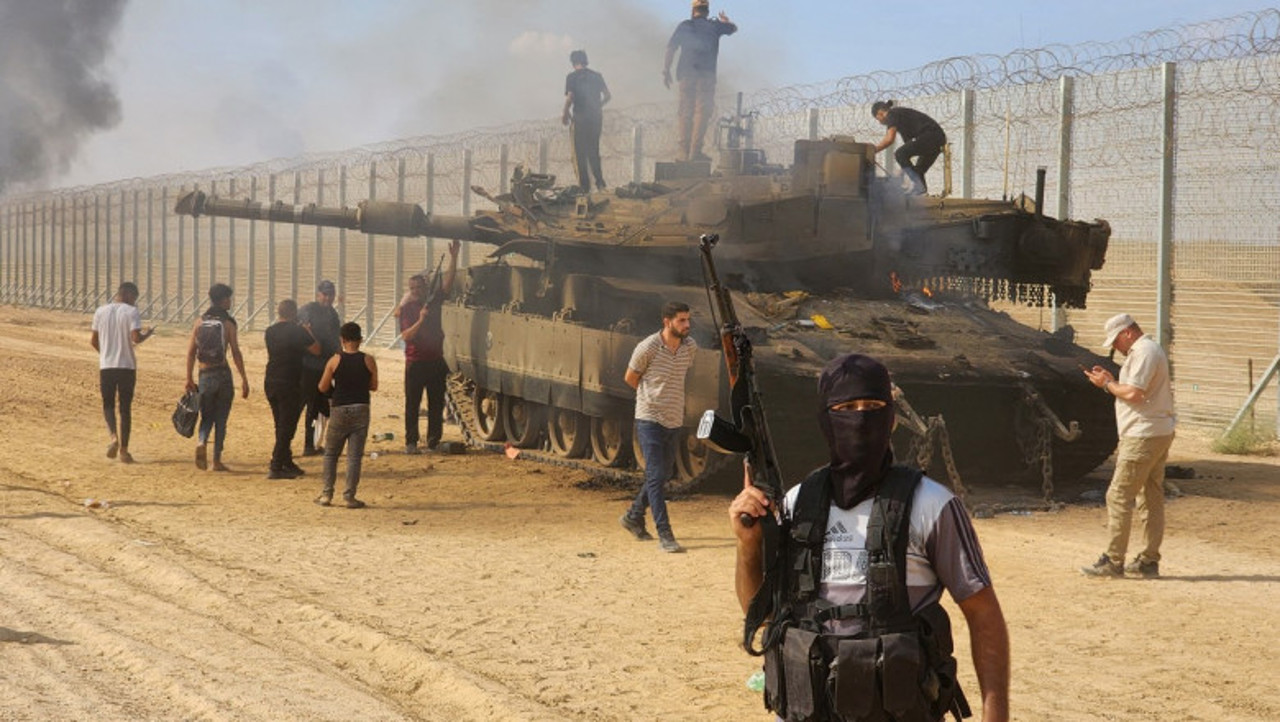The Washington Post: Hamas envisioned deeper attacks
The evidence, described by more than a dozen current and former intelligence and security officials from four Western and Middle Eastern countries, reveals an intention by Hamas planners to strike a blow of historic proportions, in the expectation that the group’s actions would compel an overwhelming Israeli response. Several officials who had not previously spoken about the matter said the intelligence about Hamas’s motivations has become stronger in recent days, writes the Washington Post.

TThe findings also shed new light on the tactics and methods used by Hamas to deceive Israel’s vaunted intelligence establishment and thwart initial efforts by the Israel Defense Forces to stop the attack. After breaching the Israeli border in some 30 places, Hamas militants staged a mass slaughter of soldiers and civilians in at least 22 Israeli villages, towns and military outposts and then drew Israeli defenders into gun battles that continued for more than a day.
New evidence suggests that they were prepared to go even further. Some militants carried enough food, ammunition and equipment to last several days, officials said, and bore instructions to continue deeper into Israel if the first wave of attacks succeeded, potentially striking larger Israeli cities.
The assault teams managed to penetrate as far as Ofakim, an Israeli town about 15 miles from the Gaza Strip and about half the distance between the enclave and the West Bank. One unit carried reconnaissance information and maps suggesting an intention to continue the assault up to the border of the West Bank, according to two senior Middle Eastern intelligence officials and one former U.S. official with detailed knowledge of the evidence. Hamas had been increasing its outreach to West Bank militants in recent months, although the group says it did not notify its West Bank allies of its Oct. 7 plans in advance.
Hamas meticulously planned and prepared for a massacre of Israeli civilians on a scale that was highly likely to provoke Israel’s government into sending troops into Gaza, analysts said. Indeed, Hamas leaders have publicly expressed a willingness to accept heavy losses — potentially including the deaths of many Gazan civilians living under Hamas rule.
“Will we have to pay a price? Yes, and we are ready to pay it,” Ghazi Hamad, a member of the Hamas politburo, told Beirut’s LCBI television in an interview aired on Oct. 24. “We are called a nation of martyrs, and we are proud to sacrifice martyrs.”
Hamas was willing to accept such sacrifices as the price for kick-starting a new wave of violent Palestinian resistance in the region and scuttling efforts at normalizing relations between Israel and Arab states, according to current and former intelligence officials and counterterrorism experts.
“They were very clear-eyed as to what would happen to Gaza on the day after,” said a senior Israeli military official with access to sensitive intelligence, including interrogations with Hamas fighters and intercepted communications. “They wanted to buy their place in history — a place in the history of jihad — at the expense of the lives of many people in Gaza.”
To obtain detailed intelligence, Hamas deployed cheap surveillance drones to generate maps of the Israeli towns and military installations within a few miles of the $1 billion barrier system that Israel built to wall off Gaza. The group elicited additional information, intelligence officials said, from Gazan day laborers who were permitted to enter Israel for work, often in the same farming communities that were in Hamas’s crosshairs. It even monitored Israeli websites, studying real estate photographs and social media postings depicting life inside kibbutzim and the layouts of buildings and houses.




